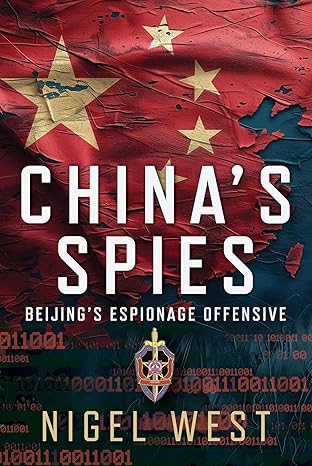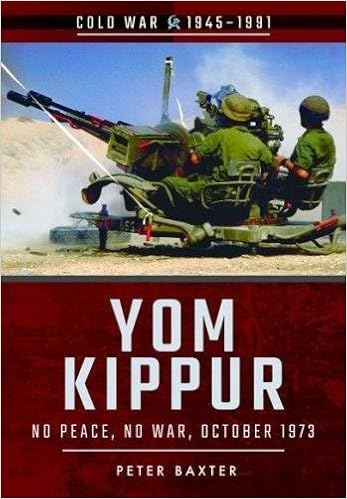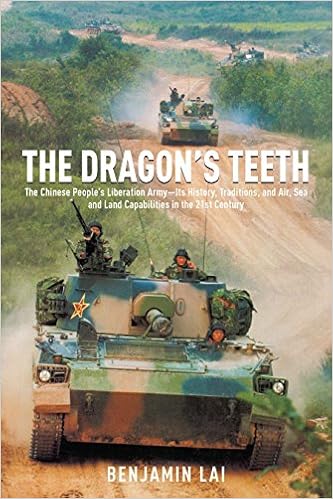Nomonhan: The Second Russo-Japanese War
By Timothy Neeno, M.A.
Origins
In the summer of 1939, the Japan and the Soviet Union fought a short, but bitter conflict over a disputed section of the Manchurian-Mongolian border. It gave the Japanese military a stinging defeat and led to changes within the Japanese ruling circles that ultimately led Japan on the road to Pearl Harbor.
The conflict at Nomonhan grew out of the running conflict between Russia and Japan over influence in China and Mongolia, especially Manchuria, the northeastern-most part of China. Manchuria was rich in grain, coal and iron, and was also blessed with warm water ports, eagerly coveted by the Russians for their Pacific fleet. In the Russo-Japanese War (1904-05) the Japanese humiliated the Russians, driving them from the richest parts of Manchuria.
In the Great Depression, as trade dried up and unemployment grew, an ultra-nationalist clique within the Japanese military sought to secure the markets and raw materials Japan so desperately wanted. The Kwantung Army, set up in Port Arthur in 1919, had long been home to the most vocal and the most violent advocates of continued Japanese expansion in China. In 1931, a militant faction within the Kwantung Army deliberately fabricated an attack on the railway outside of Mukden, in Manchuria. The so-called 'Mukden Incident' gave the Kwantung Army the excuse it needed to occupy Manchuria completely. In 1932 the Japanese proclaimed the puppet state of 'Manchukuo', and installed Puyi, the last emperor of the Manchu Dynasty deposed in 1912, as their pliant vassal.
It is worth examining the relationship between the Kwantung Army and the Imperial Japanese Army's General Staff. Normally in a modern society the military is subject to a strict chain of command. The Japanese army in the 1930s was different in that important policy decisions were often made at relatively low levels, by people on the spot. Then the Army General Staff and the government in Tokyo would have to go along, if only out of fear of angering nationalist sentiment within the military. In practice the Kwantung Army operated more like an independent fiefdom as in the days when Japan was a warring feudal state. The Japanese leadership was cautious enough to not order aggressive acts itself, but it also was afraid to discipline the ultra-nationalist militarists within the army. In other words, Japan was not aggressive in this period due to a strong leader like Hitler or Mussolini, but rather because it lacked a strong leader.
On July 7, 1937 the militarists struck again, fabricating a new incident at the Luguo (Marco Polo) Bridge just outside of Beijing. The Japanese quickly overran Beijing, Shanghai, Nanjing, and most of the other major cities of China, in what they termed the 'China Incident'. But the Chinese would not surrender, and as the Japanese advanced into China, their logistical position worsened.
Throughout the 'China Incident', the Japanese military always saw the Soviet Union as their primary opponent. Bombers based in Siberia could hit Japanese cities, while submarines from Vladivostok could harass Japanese shipping. In 1921, at the close of the Russian Civil War, the Bolsheviks had swept into the broad desert lands of Mongolia and established a revolutionary government. In 1936 the Soviets proclaimed the Mongolian People's Republic (MPR). The MPR could conceivably lay claim to what was then known as 'Inner Mongolia', a large swath of Chinese territory south and east of the MPR inhabited by ethnic Mongolians. At the same time, Communism had spread into China proper, and Chinese Communists, led by Mao Zedong, were aggressive in fighting a guerilla war against the Japanese occupation.
All this was profoundly disturbing to Japan's military leaders. Defense Minister Itagaki Seishiro [Japanese names are traditionally written family name first.] wanted to deal with the rising power of the Soviets while Japan held a position of strength. In 1931 the Soviet Red Army had just six infantry divisions in the Special Far Eastern Army tasked with watching the Manchurian border. By 1936 the Far Eastern Army had twenty infantry divisions, supported by a hundred tanks. In that year alone there were thirty three armed clashes along the 3,000 mile frontier separating the Soviet Union from Manchukuo. Worse, in August of 1937 the Soviets began sending Poliparkov I-15 and I-16 fighter planes to aid the Chinese, along with some 200 'volunteer' pilots, and a staff of supporting technicians. From this point on, Russia and Japan could be said to be fighting an undeclared war.
In 1935 the Soviets began moving troops into the Mongolian People's Republic to counter Japanese expansion. After the Marco Polo Bridge Incident the Soviets began to act more aggressively. In 1938 the Soviets sent the 57th Special Rifle Corps, which included a motorized infantry division and four armored brigades, into the MPR. Although they stayed back from the actual border, their presence there was a clear warning to the Japanese.
Changkufeng
On January 1, 1938, German Foreign Minister Ribbentrop spoke with Oshima Hiroshi, Japan's Ambassador in Berlin, raising the possibility of a German-Japanese alliance. Hitler had secured his position in Germany and was eager to take over Austria and the German-speaking lands in the Sudeten region of Czechoslovakia. It would be a great benefit to Nazi Germany to keep the Soviets occupied in the Far East while this was going on. The Japanese high command wanted a German alliance to warn off the Soviets while the Japanese overran China, and possibly to expand into mineral rich Siberia in the event of an all-out Russo-German conflict.
The Japanese had also learned, through a high-level NKVD defector, that the Soviet Army was in disarray. Stalin had instituted a massive purge of the Soviet military in November of 1937, and thousands of Red army officers had been arrested and murdered. Soviet military capability was at a low ebb.
Egged on by the military, in July of 1938 the Japanese Foreign Office had Mamoru Shigemitsu, the ambassador to the Soviet Union, meet with Soviet Foreign Minister Maxim Litvinov and demand that the Soviets evacuate the disputed territories along the Manchurian border. The border had never been properly surveyed and maps were poor and outdated. The areas in dispute were small and militarily unimportant but neither side was prepared to simply back down. Now the Japanese raised the temperature in the dispute.
On July 13, 1938, the Soviets occupied Changkufeng Hill in the disputed area between Siberia and Japanese controlled Korea. Changkufeng was a particularly sensitive point because it was only 50 miles from Vladivostok. On July 29 the commander of the IJA's 19th Infantry Division, responsible for the defense of northern Korea, on his own initiative, ordered an assault on Changkufeng, and neighboring Shatsaofeng Hill, which had also been occupied by the Soviets. From Changkufeng, the Japanese could threaten Russian communications with their naval base at Posyet Bay.
From August 2nd through the 9th the Soviets continually bombarded the Japanese holding out on Changkufeng Hill, launching a series of sporadic attacks. The Japanese repulsed the uncoordinated Russian assaults. But it was clear that the 19th Division could not hold out alone. Unwilling to widen the clash, on August 9th, 1938, the Japanese agreed to a cease fire with the Soviets and quietly withdrew their troops from the disputed hills. In the fighting the Japanese lost some 500 men, with 900 wounded.
The First Clashes
Changkufeng should have made the Japanese cautious. But several factors made the Kwantung Army leadership willing to face the Russians again. 1938 was the year of the Munich Crisis in Europe, and the Soviets had to keep an eye on events in the West. Furthermore, due to the brutality of Stalin's purges, the Red Army would not be weaker than it was then. The 19th Division's defense of Changkufeng seemed to show that the Soviets, while numerically superior, had failed to coordinate their attacks properly, or use their armor and air power well. Drawing on their experiences in the Russo-Japanese War, the Japanese regarded the typical Russian soldier as dull witted and lacking in spirit. Japanese soldiers, inspired by the spirit of bushido, and trained in aggressive, small unit actions with the bayonet, could easily stand up to the Russians superior numbers. All signs seemed to point to an opportune moment for a showdown.
In the event of a second Russo-Japanese War the IJA high command had envisioned an offensive strategy, with a push west across the Khingan Mountains into that portion of Siberia north of the Mongolian border. The Japanese planned to cut the Trans-Siberian Railway, isolating the whole of the Soviet Far East and pushing the Russians back beyond Lake Baikal. They increased the capacity of the Harbin-Tsitsihar-Khaila railway and started a new railroad paralleling the Mongolian border in order to improve their logistical position. Now, in April of 1939, Lt. Gen. Ueda Kenkichi, commander of the Kwantung Army, backed by War Minister Itagaki, ordered a more aggressive policy on the border. Soviet or Mongolian incursions into disputed territory were to be decisively punished. Local commanders were to patrol aggressively, and even pursue interlopers across the border. A detachment of troops was sent into the disputed Nomonhan region between Manchuria and Mongolia to map the area.
Until then, no accurate maps of the area existed. The Japanese insisted that the border was the Khalkin Gol, or Khalka River, flowing north and east into the Buir Nor. The Mongolian People's Republic, backed by the Soviets, claimed the area some 20 kilometers east of the Khalkin Gol, including the village of Nomonhan.
On May 11th, a detachment of 70-80 MPR cavalry crossed the Khalkin Gol in search of grazing. The came upon the village of Nomohan and drove off a small detachment of Manchurian troops guarding it. A Manchurian battalion came up and drove the Mongolians back over the river. But the next day the Mongolians came back in force, crossing the river and throwing up pontoon bridges to reinforce their claim to the region.
Escalation
The Manchurians could not dislodge the Mongolians, and the Japanese began moving up troops. On May 15th, a reinforced battalion under Lt. Col. Azuma struck the Mongolians and pushed them back over the river. On May 20th, the first clashes in the air took place over the disputed area, as both sides brought up reinforcements. MPR troops, now backed by the Soviets, pushed back into the disputed territory east of the river. On May 28th Azuma tried to cut the Soviet's communications line over the river. In two days of sharp fighting the Soviets drove the Japanese off with some 400 casualties.
At the same time the air battle was heating up. On June 27th the Kwantung Army sent the 2nd Hikodan (Air Brigade) to attack the main Soviet air base at Tamsak-Bulak in Mongolia. It is very hard to sort out losses in the air war, as both sides minimized their losses and exaggerated their victories. However the Japanese surprised the Russians with their sudden strike. The Nakajima Ki- 27, the Japanese Army Air Force's new, all-metal monoplane fighter, was clearly superior to the Poliparkov I-15s, I-16s, and somewhat better I-153s. The Japanese pilots, were better trained as well. On the whole, the Russians lost 1.5 planes for every Japanese plane they shot down.
Here the fragmented Japanese system of command began to handicap their operations. IJA headquarters in Tokyo had not authorized the strike on Tamsag-Bulak, and forbade expanding air operations. Thus the JAAF could not capitalize on their tactical superiority to get complete command of the air.
The Kwantung Army was still willing to escalate. On July 1, 1939 the IJA 23rd Infantry Division, under Lt. Gen. Komatsubara Michitaro, backed by two tank regiments, struck at the Russians dug in east of the river. The pushed to the Khalka River, and in the night, two regiments crossed the river, seizing the Baintsagan Heights on the west bank.
But in early June, an aggressive new Soviet commander arrived. He was Lt. Gen. Georgi K. Zhukov, age 42. On July 1st the 1st Front Army was organized under his command. As soon as he learned of the Japanese penetration, he launched a coordinated three-pronged counterattack by the 11th Tank Brigade, plus a motorized infantry regiment and a brigade of armored cars. The Japanese themselves launched a counter attack to try to hold onto their gains, but the Japanese anti-tank weapons were not adequate against Soviet armor. The Japanese, in desperation, resorted to suicide attacks with squads of men hurling satchel charges and Molotov cocktails, but they could not stop the Soviet onslaught. In two days of heavy fighting the Soviets retook the Baintsagan Heights and threatened the one pontoon bridge the Japanese had across the Khalkin Gol, forcing the Japanese to withdraw over the river.
The fighting went on. Between late May and July 25th the Japanese suffered some 5,000 casualties along a thirty kilometer front. Russian losses were higher, but the Red Army could call on greater manpower resources. The real battle was logistics, and here, Zhukov excelled. His nearest base, on the Trans-Siberian Railway, was 465 miles away across dirt roads. Zhukov estimated his needs at 18,000 tons of artillery shells alone, plus fuel and lubricants, food, and everything else needed to sustain modern warfare. Over the months, Zhukov built up a fleet of 2,600 trucks, including 1,000 fuel trucks.
Meanwhile the Japanese supply system was badly handled. Troops went for days without water in temperatures that reached 104 degrees Fahrenheit and more in the daytime. In general the Nomonhan area was inhospitable. With broiling hot days came cold, damp nights. Dust was everywhere, while swarms of flies and mosquitoes tormented the men. Bad sanitation and lack of water brought typhus and dysentery. Most importantly, the nearly 200 mile distance from their base of supply in Hailaerh and the lack of motorized transport created an insurmountable logistical bottleneck for the Japanese.
By early August the Japanese had some 75,000 IJA and Manchurian troops committed, including the 7th and 23rd Infantry Divisions, plus cavalry, artillery, and anti-tank units, supported by some 300- 500 planes in three Air Groups. On August 10th the Japanese organized their forces into the 6th Army under Gen. Ogisu Rippu. Gen. Ogisu planned an offensive, top begin on August 24th.
But the Soviets had also opted for a decision. Alarmed at Hitler's threats against Poland, Stalin wanted to be freed up from distractions in the Far East. Stalin was prepared to deal with Hitler, but he wanted to do so from as strong a position as possible. In early August, STAVKA, the Soviet high command, sent Zhukov an additional 1,625 trucks from European Russia. This gave Zhukov the logistical base he needed for a decisive stroke.
Decision
All through early and mid August Zhukov quietly moved up reinforcements. The troops moved only at night, masking the sound of tanks massing with late night bombing raids and small arms fire on Japanese positions. Zhukov deliberately ordered his men to continue constructing defensive positions to lull Japanese suspicions, while sending out patrols to scout enemy positions by night. Zhukov, absorbing the tactical lessons of the Spanish Civil War, insisted on careful cooperation between the air and ground forces. Air reconnaissance was used to pinpoint Japanese defense positions, and pilots were made to participate in ground briefings with the Red Army. By mid August Zhukov had 5 divisions and 4 armored brigades in position in front of just over 2 Japanese divisions.
At 6:00 AM, on August 20th, Zhukov struck. 100,000 Russian and Mongolian troops moved forward along a 48 mile front, supported by 500 tanks and 216 artillery pieces. Surprise was total. Soviet artillery outgunned the Japanese batteries, which were short on ammunition. Russian bombardments cut phone lines, isolated Japanese units, and blasted apart flimsy dugouts. 200 SB-2 bombers, heavily supported by fighters, struck Japanese defenses and lines of communications. The Soviet bombers could fly at 20,000 feet, too high for the Japanese fighter planes. Soviet air losses were high, but they were able to wrest command of the air over the battlefield from the Japanese.
The decisive factor was that Zhukov coordinated his armor with infantry, artillery, and air support. The Japanese in the 1930s were hampered by a limited manufacturing base. They could not build airplanes and tanks in sufficient quantities at the same time. The Japanese had opted to develop aircraft production. Now the Japanese paid the price, as Soviet T-26 and T-28 tanks chopped up the weaker Japanese armor. The Russians had learned, and countered the Japanese use of Molotov cocktails by converting their tanks to diesel fuel and putting wire mesh netting over vulnerable engine gratings.
In savage fighting the Soviets cut around the Japanese left (southern) flank, and then the Japanese right, in a double envelopment. Soviet tanks, now behind the Japanese, linked up at the village of Nomonhan, trapping the Japanese 23rd Division. The Japanese fought back with desperate courage. One Japanese regimental commander burnt his colors and committed seppuku, rather than surrender. Another died in a last, fanatic banzai charge against oncoming Russian armor. But it was all in vain. Russian tanks, equipped with flamethrowers, supported by infantry, took one entrenched Japanese strong point after another.
On August 26th a Japanese counter attack to relieve the trapped 23rd Division was halted by a Russian tank brigade. The next day, the Japanese 23rd Division made a last bitter effort to break out to the east. They were defeated. By August 31, 1939 the Japanese had been driven back out of the disputed territory. Of 60,000 Japanese troops committed, nearly 45,000 were killed. The IJA 23rd Infantry Division took 73% casualties. The 71st Regiment suffered over 93% losses. In contrast, the IJA took 28% casualties at Mukden, the most hard fought battle of the Russo-Japanese War.
Results and Lessons
The Kwantung Army had taken a savage pummeling. The Soviets took some 3,000 Japanese prisoners, many badly wounded. The Soviets were eager to indoctrinate them to Communism. Some 1,000 stayed on in the Soviet Union rather than face dishonor at home. Soviet casualties were also high. They admitted to a little over 9,000 casualties, but the actual total was closer to 17,000 or higher. But these were losses the Red Army could afford.
At this point the Soviets could have pushed into Manchuria, but instead they halted at the line the MPR had claimed at the start of the affair and dug in. All through this period the Soviet KGB had a spy ring operating in Tokyo under the masterful leadership of Richard Sorge. Sorge's information showed that the Japanese wanted an end to the fighting as soon as possible. Knowing this, as early as August 22 the Soviets had offered Japanese Ambassador Togo Shigenori in Moscow a cease fire.
On August 23, 1939 the Soviets signed a Non-Aggression Pact with Nazi Germany, agreeing to divide Poland. The last hope of the 'Strike North' faction in the Japanese high command was dead. On September 15th, as German tanks closed in on Warsaw, Ambassador Togo signed a cease fire with the Russians, to take affect on the 16th. Both sides agreed to exchange POWs and establish a joint commission to resolve disputes along the length of the border. As the Second World War engulfed Europe, Stalin was free to focus his attention in the West.
In Japan the Kwantung Army, and the IJA in general, suffered a significant loss of influence. Lt. Gen. Komatsubara Michitaro, commander of the 23rd Infantry Division, was disgraced. In early September Lt. Gen. Ueda, commander of the Kwantung Army, was reassigned to Japan, effectively ending his career. The Kwantung Army ceased to be a law unto itself and was brought back under centralized control from Tokyo. The Japanese were very careful not to provoke the Soviets again. Even when they signed the Tripartite Pact with Germany and Italy in March of 1941, the Japanese hastened to sign a non-aggression pact with the USSR as well.
For his part, Zhukov was promoted to the important Kiev Military District. In the event of a war with Germany, or a Soviet push into the Balkans, Stalin would have a top commander in position. When the Nazis invaded Russia in 1941 Zhukov rose rapidly in the Red Army, and applied the lessons of mobile war learned on the plains of Nomonhan.
The Soviets were made acutely aware of the deficiencies of the Red Air Force. New fighter designers like Mikoyan and Yakolev now had Stalin's ear. The problems of the T-26 tank, though less important when fighting the Japanese, influenced the design of the T-34, which went into action against the Germans in 1941.
The Japanese, on the other hand, did not learn. A major hero of the war on the Japanese side was Lt. Sadakaji, who attacked a Soviet tank with his sword. The vital lessons, that modern warfare depends heavily on supply and equipment, were ignored. The desperate courage and suicidal bravery the Japanese infantrymen showed in the fighting at Nomonhan was to be seen again at Guadalcanal and Iwo Jima. But so were the Japanese army's deficiencies in heavy weapons and organization.
In the end, Nomonhan ruined the so-called 'Strike North' faction that had dominated Japanese strategic thinking until then. Now the 'Strike South' faction, led by the navy, would be ascendant. The Strike South leaders looked enviously at the oil rich Dutch East Indies (modern Indonesia), at strategic Malaya and Singapore, at Burma and Indochina, as the new war in Europe paralyzed the British and French. The only thing stopping the Japanese now was the US Pacific Fleet at its base at Pearl Harbor.
| * * * |
Show Notes
| * * * |
© 2025 Timothy Neeno, M.A.
Written by Timothy Neeno.
About the author:
Timothy Neeno is originally from Chicago, Illinois. He graduated with a Masters in US History from the University of Wisconsin in 1990. Since then he has gone into teaching. He and his wife have worked and taught in Bolivia, Taiwan, Kuwait, Brazil and the Navajo Reservation and have traveled in Europe, Asia and the Middle East. Since 2002 they have settled in the Phoenix area. He currently teaches history at the University of Phoenix.
* Views expressed by contributors are their own and do not necessarily represent those of MilitaryHistoryOnline.com.







